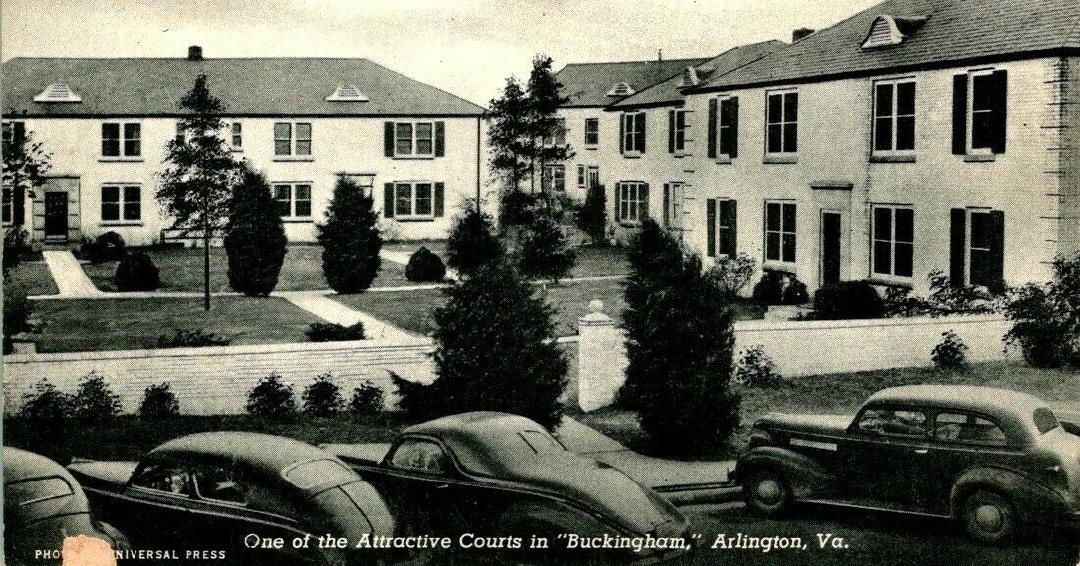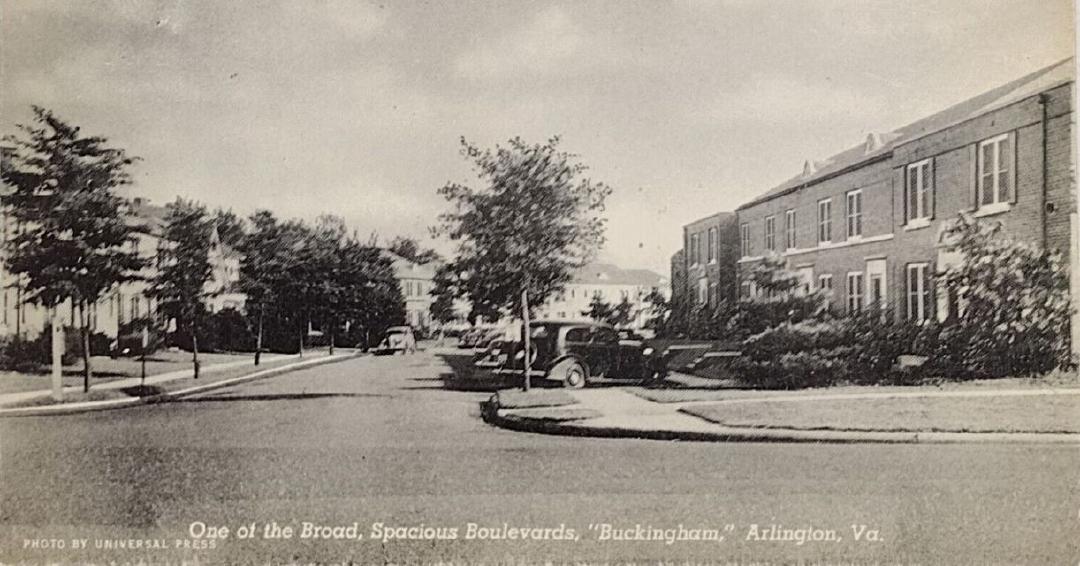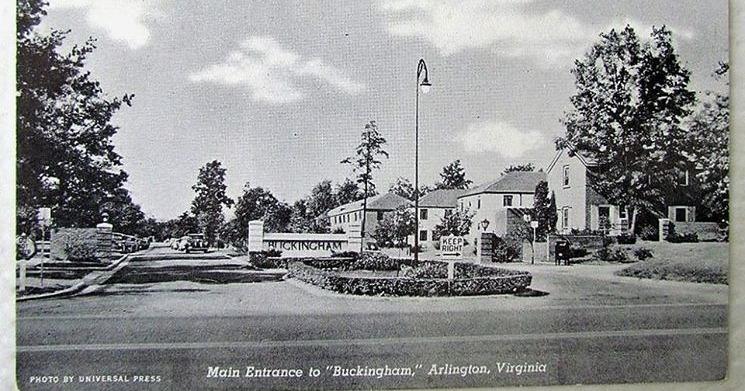Buckingham Apartments
Buckingham was not low-cost housing but rather housing that was lower in cost

Built between 1937 and 1938 in the Colonial Revival style, Buckingham is an example of the planned garden-style residential communities that became popular during the suburbanization of many metro areas during the first decades of the 20th Century.
On January 21, 1999: Buckingham Historic District was named to the National Register of Historic Places.
The Buckingham Historic District, also known as Historic Ballston Park, is a national historic district with 151 buildings in a residential neighborhood in north Arlington. The Buckingham Historic District is closely associated with the development of Arlington from a rural area to an independent suburban Northern Virginia county. Built between 1937 and 1938 in the Colonial Revival style, Buckingham is an example of the planned garden-style residential communities that became popular during the suburbanization of many metro areas during the first decades of the 20th Century. It became a model for other planned residential communities for white collar, middle class families. In the mid 1930's, the Committee for Economic and Social Progress, a private group consisting of 16 national business leaders sponsored the Buckingham project.
Before 1900, the economy of the county was supported mostly by black farmers who were welcomed in the area due to the abolitionist sentiment that had existed prior to the Civil War. In the latter part of the 19th Century and the beginning of the 20th Century, the introduction of the electric railway and other developments in transportation gave Washingtonians the opportunity to live outside the capital in the "country."
Arlington became an appealing location for commuters because it proved to be closer to jobs in DC than some locations within the District's city limits. With growth in the federal government through both World Wars and construction of the Pentagon and at Ft. Myer, the appearance and demographics of the county began to change. A growing number of middle class families working for the government at the local, state, and federal levels created a demand for housing that could not be met within the city limits of Washington, DC. With the increased population and improved standard of living, developers throughout the country became aware of the need for better housing at more moderate prices.
To make the project successful, the home building business needed to change from a professional approach to an industrial approach, applying techniques used in the auto industry. So to facilitate construction, materials were bought and packaged in complete units. For example, tiles for each bathroom were packaged in "room-unit sets" and "constituted one of continuous use of construction equipment and forms accomplished further economies." As a result, Buckingham was not low-cost housing but rather housing that was lower in cost because of the "economies and improved quality made possible by large-scale operation."
Images





